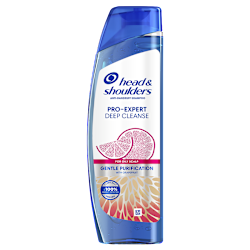Alopecia areata causes and differences vs dandruff
In extreme cases, dandruff can cause temporary hair loss. Make sure you’re not confusing alopecia areata with dandruff. Read our guide to find out more.
Alopecia areata can be a particularly distressing condition – it begins with clumps of hair falling out. It affects around two percent of the global population.
Let’s look at it a little more closely.

ALOPECIA AREATA: CAUSES AND SYMPTOMS
There are three recognized variations of alopecia areata, all with the same cause.
Alopecia areata is an autoimmune skin disease. While it has its origins in a person’s genetic make-up, it is not really hereditary in the classic sense, nor is it contagious.
Scientists have also noted the possibility of other factors and triggers involved in the development of the condition.
It’s also worth noting that the two percent of the population mentioned above do not suffer from alopecia areata all the time. Rather, this figure refers to ‘lifetime risk’, which is the possibility that a given individual will suffer from the condition at some point.
So, what does it look like?
As we’ve said, alopecia areata is an autoimmune skin disease – but what does this mean?
Effectively, in the bodies of those suffering from alopecia areata, the immune system becomes confused. It begins to attack healthy hair follicles (which contain the roots of your hair). This causes hair to fall out in clumps, even in those who are otherwise healthy.
Other symptoms include nail problems such as:
tiny dents in the nail (pitting)
white spots or lines
rough texture and loss of shine
thinning and split nails
This hair loss is not always permanent; often, the hair will grow back in a few months. This is because your hair follicles do not die when your immune system attacks them.
Alopecia areata is broken down into three types according to severity:
Alopecia areata is the most common form, characterized by coin-sized patches on the scalp and body
Alopecia areata total is causes total hair loss on the scalp
Alopecia areata universalis causes total hair loss on the entire body, including the face and scalp
TREATING ALOPECIA AREATA
The key to dealing with alopecia areata is talking to your doctor. They’ll be able to recommend a course of treatment tailored to the specifics of your condition, giving you the best chance of success.
Is it possible to confuse dandruff with alopecia areata, the main feature of which is hair loss?
DANDRUFF AND ALOPECIA AREATA
Dandruff is caused by the Malassezia globosa fungus. This yeast-like fungus lives on all our scalps, and is usually harmless.
In some cases, however, one’s personal sensitivity to oleic acid – a by-product of Malassezia globosa’s life-cycle – can lead to dandruff symptoms:
itchiness
white flakes in the hair
red scalp
Alopecia areata, as mentioned, is an autoimmune disease. The immune systems of alopecia areata sufferers attacks their hair follicles, which house the roots of hair.
This leads to hair loss in patches on the scalp and elsewhere. In severe cases, the hair on the entire body can fall out.







